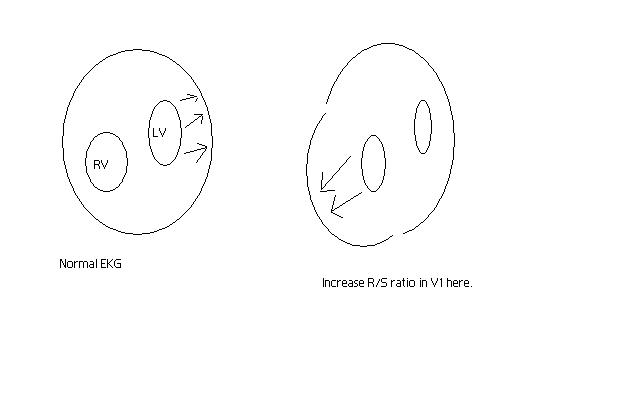RVH Criteria
- Tall R waves (R:S ratio > 1) in V1-V2
- S waves in V5-V6
- Right Axis Deviation
Understanding the Criteria
The diagnosis of right ventricular hypertrophy follows the same logic as that of LVH. RVH is an important finding as it can be indicitive of right-sided valvular pathology (pulmonic, tricuspid), as well as significant pulmonary disease
The R wave in the anterior leads (V1-V2) is what indicates the depolarization of the right ventricle. In a normal heart this depolarization is masked by the much larger signal from the left ventricle, which pulls in the opposite direction and so only the S wave is seen in the leads V1 and V2. In RVH, however, the signal is much stronger and comes through as an R-wave in leads V1V2, and similarly, as a deep S wave in leads V5-V6.

It`s important to note that several other conditions can mimic the findings of RVH. An important differential to know is the differential diagnosis for an increased R:S ratio in the anterior leads.
These include:
Teasing out your diagnosis means looking for other hints or suggestions that this is indeed RVH. These include a right-axis deviation, evidence of right atrial enlargement, and incomplete bundle branch block.